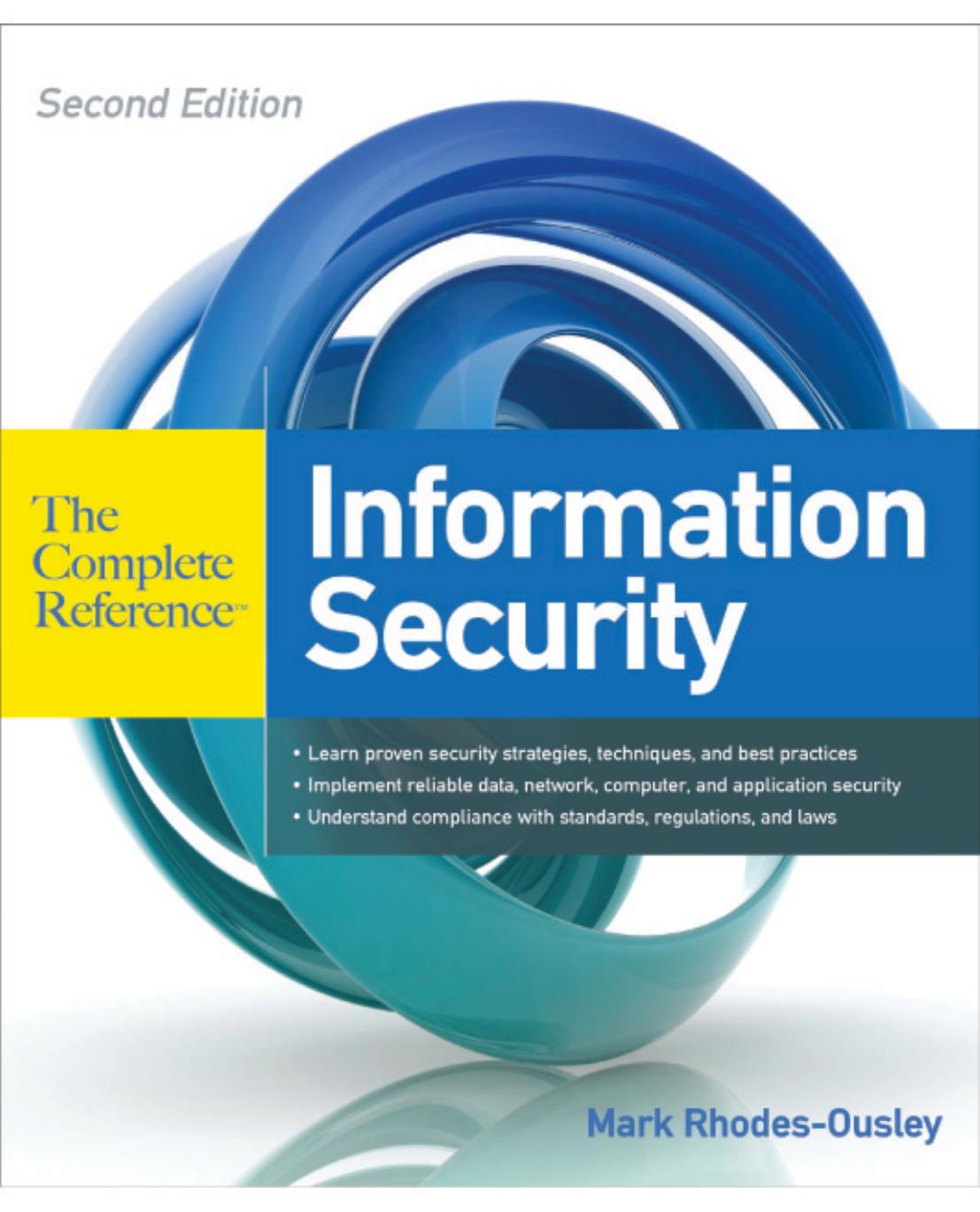Information Security The Complete Reference by Mark Rhodes-Ousley

Author:Mark Rhodes-Ousley
Language: eng
Format: epub, pdf
Tags: -
Publisher: McGraw-Hill Education
Published: 2013-03-26T04:00:00+00:00
Wireless Intrusion Detection and Prevention
The preceding points notwithstanding, intrusion detection on wireless networks should always cover the data-link layer. The principles of intrusion detection are outlined in Chapter 18. Here, we briefly cover wireless-specific IDS issues. Many applications claim to be wireless IDS systems but detect new MAC addresses on a LAN only as long as these addresses are not permitted by an ACL. Such functionality is implemented in the firmware of some access points as well. Of course, anyone able to bypass MAC-based ACL will bypass MAC-based “IDS.” A true wireless IDS is a dedicated 802.11 (or 802.15) protocol analyzer supplied with an attack signature database or knowledge base and inference engine, as well as an appropriate report and alarm interface. Some suspicious events to look for on a wireless LAN include
• Probe requests (a good indication of someone using active scanning mode)
• Beacon frames from unsolicited access points or ad hoc wireless clients
• Floods of disassociate/deauthenticate frames (man-in-the-middle attack?)
• Associated but not authenticated hosts (attempts to guess the shared key?)
• Frequent reassociation frames on networks without enabled roaming, and frequent packet retransmits (“hidden node,” bad link, or possible DoS attack?)
• Multiple incorrect SSIDs on closed networks (SSID brute-forcing?)
• Suspicious SSIDs such as “AirJack” (or plain old “31337”)
• Frames with unsolicited and duplicated MAC addresses
• Randomly changing MAC addresses (attackers using Wellenreiter or FakeAP)
• Frames transmitted on other 802.11 channels within the five-channel range, or frames with different SSIDs transmitted on the same channel (misconfigured and probably unsolicited host, interference, DoS?)
• Hosts not using implemented cryptographic solutions (should not be there)
• Multiple EAP authentication requests and responses (brute-forcing EAP-LEAP?)
• Malformed and oversized EAP frames and various EAP frame floods (802.1x DoS attack?)
• 802.11 frame sequence numbers that don’t match the established sequence cycle (man-in-the-middle attacks, MAC spoofing on LAN?)
• ARP spoofing and other attacks originating from wireless LANs
Download
Information Security The Complete Reference by Mark Rhodes-Ousley.pdf
This site does not store any files on its server. We only index and link to content provided by other sites. Please contact the content providers to delete copyright contents if any and email us, we'll remove relevant links or contents immediately.
The Mikado Method by Ola Ellnestam Daniel Brolund(20601)
Hello! Python by Anthony Briggs(19897)
Secrets of the JavaScript Ninja by John Resig Bear Bibeault(18203)
Dependency Injection in .NET by Mark Seemann(18105)
The Well-Grounded Java Developer by Benjamin J. Evans Martijn Verburg(17574)
OCA Java SE 8 Programmer I Certification Guide by Mala Gupta(17419)
Kotlin in Action by Dmitry Jemerov(17179)
Adobe Camera Raw For Digital Photographers Only by Rob Sheppard(16929)
Algorithms of the Intelligent Web by Haralambos Marmanis;Dmitry Babenko(16233)
Grails in Action by Glen Smith Peter Ledbrook(15388)
Test-Driven iOS Development with Swift 4 by Dominik Hauser(10391)
Becoming a Dynamics 365 Finance and Supply Chain Solution Architect by Brent Dawson(8052)
Microservices with Go by Alexander Shuiskov(7816)
Practical Design Patterns for Java Developers by Miroslav Wengner(7718)
Test Automation Engineering Handbook by Manikandan Sambamurthy(7667)
Angular Projects - Third Edition by Aristeidis Bampakos(7159)
The Art of Crafting User Stories by The Art of Crafting User Stories(6610)
NetSuite for Consultants - Second Edition by Peter Ries(6531)
Demystifying Cryptography with OpenSSL 3.0 by Alexei Khlebnikov(6304)
